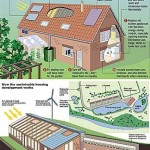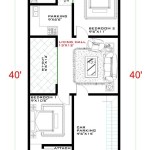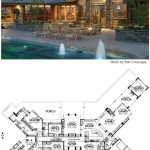Narrow Lot House Plans With Garage In Back Yards
Building on a narrow lot presents unique design challenges, especially when incorporating a garage. Placing the garage in the backyard offers a solution that maximizes usable space and curb appeal. This approach allows for a more traditional street-facing facade while maintaining convenient vehicle access.
Several factors influence the design and feasibility of a rear-access garage. Local zoning regulations often dictate setbacks, alley access requirements, and maximum building heights. Understanding these limitations is crucial before commencing any design work. Consulting with a local architect or builder is highly recommended to navigate these regulatory complexities.
One common approach to backyard garage access involves a driveway extending along the side of the house. This requires careful consideration of landscaping and potential impacts on outdoor living spaces. The driveway width must accommodate vehicle turning radii and provide sufficient clearance for pedestrians. Permeable paving materials can mitigate runoff and contribute to a more environmentally friendly design.
Alternatively, some lots may offer access via a rear alleyway. This provides a discreet entry point, keeping the front yard free from driveways. Alley access can also simplify garage design and construction, potentially minimizing excavation and grading requirements. However, security considerations become more pronounced with alley access, necessitating appropriate lighting and potentially gated entry systems.
The garage itself can be designed in various ways to complement the main house and optimize the available space. A detached garage offers flexibility in placement and design, potentially incorporating a second story for additional storage or living space. Attached garages, while potentially limiting design options, provide convenient covered access to the home.
Architectural styles for narrow lot houses with rear garages are diverse. Modern designs often feature clean lines and minimalist aesthetics, maximizing natural light and incorporating sustainable materials. Traditional styles can be adapted to narrow lots by emphasizing vertical elements and utilizing strategically placed windows to create a sense of spaciousness. Craftsman-style homes, with their emphasis on handcrafted details and natural materials, can also be effectively adapted to this type of lot configuration.
Interior layouts for narrow lot homes often prioritize open-plan living areas to create a sense of airiness and flow. Stair placement is a crucial consideration, with options including straight staircases, L-shaped staircases, and spiral staircases depending on available space and desired aesthetic. Maximizing vertical space is essential, with features like high ceilings and lofted areas contributing to a sense of spaciousness.
Landscaping plays a critical role in enhancing the curb appeal and functionality of narrow lot homes. Front yards can be designed to create a welcoming entryway, incorporating features like pathways, flowerbeds, and small trees. Backyards, even with a garage, can offer private outdoor retreats. Careful selection of plants, hardscaping materials, and outdoor furniture can maximize usable space and create a sense of tranquility.
Several design strategies can mitigate the challenges of narrow lot living. Utilizing built-in storage solutions maximizes space efficiency. Large windows and skylights can bring in natural light, creating a brighter and more open feel. Mirrors strategically placed throughout the home can also contribute to a sense of spaciousness.
The cost of building a narrow lot house with a rear garage varies depending on several factors. Location, materials, and labor costs all play a significant role. The complexity of the design and the chosen finishes also influence the overall budget. Obtaining detailed cost estimates from multiple builders is essential for accurate budgeting.
Choosing the right builder for a narrow lot project is paramount. Experience with similar projects is crucial, as is a clear understanding of local regulations and building codes. Thorough communication throughout the design and construction process is essential for a successful outcome. Reviewing portfolios and obtaining client references can provide valuable insights into a builder's capabilities and reputation.
Living in a narrow lot home with a rear garage offers a unique blend of urban convenience and private retreat. Careful planning and thoughtful design can transform these seemingly challenging spaces into comfortable and stylish homes that meet the needs of modern living.
Exploring various design options and consulting with experienced professionals are essential steps in realizing the full potential of a narrow lot. By addressing the specific challenges and opportunities presented by these unique properties, homeowners can create functional and aesthetically pleasing living spaces that maximize every square foot.

Narrow House Plans With Garage 2024 Lot

20 Luxury Narrow House Plans With Front Garage Images Small Traditional Plan

Rear Lane Access Home Designs G J Gardner Homes

Narrow Lot Traditional With Alley Garages

Duplex House Plan With Rear Garage Narrow Lot Townhouse

Floor Plan Friday Narrow Block With Garage Rear Lane Access Courtyard House Plans Lot

Narrow Lot Traditional Neighborhood Development Plans
Rear Lane Access Home Designs G J Gardner Homes

House Plans For Narrow Lots And Wide

Our Best Narrow Lot House Plans Maximum Width Of 40 Feet
Related Posts








